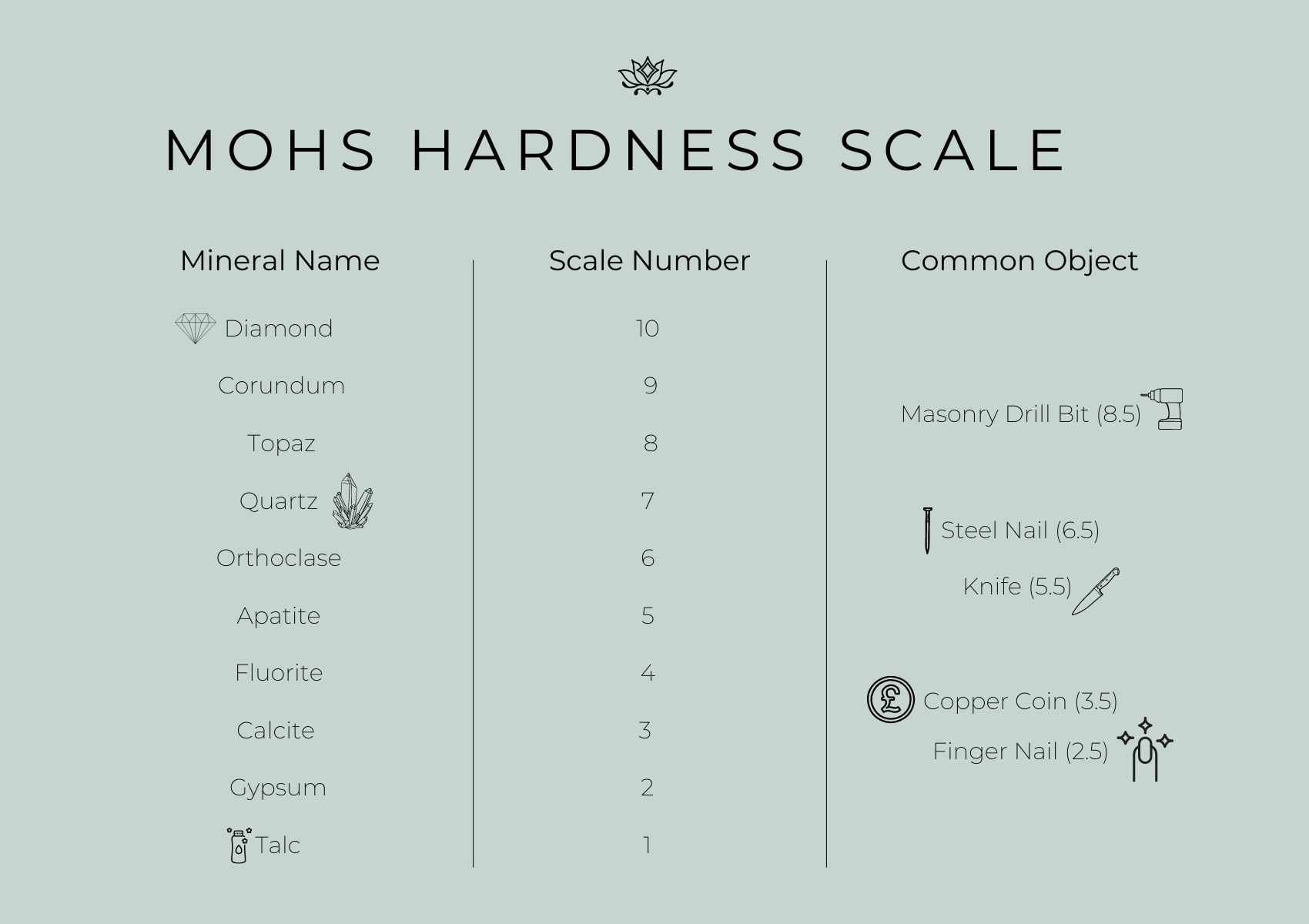Depending on how much research you’ve done into engagement rings and diamonds, there's a high chance that you would have seen ‘Mohs Scale’ floating about.
The MOHS scale was created in 1812 by German geologist Friedrich Mohs to identify and measure mineral hardness. How? By measuring the relative resistance to scratching another mineral visibly.
THE SCALE
The scale is defined by ten minerals, numbered from 1 to 10, with Talc coming in at 1 (the softest) which means it won’t scratch anything, through to Diamond (10) the hardest.
Unlike the Richter scale with each increment meaning a 10x increase, the MOHS scale numbering is purely to showcase what mineral scratches another.
Below you will see a diagram depicting the Mohs scale.

Talc, measuring 1 on the Mohs scale, doesn’t scratch anything hence why it is at the bottom. Gypsum, although still very soft, can scratch Talc but nothing else. Calcite can scratch both Gypsum and Talc but not Fluorite or anything above - can you see a pattern forming?
If you compare the strength of a standard drill bit (8.5) to a Diamond (10), that gives you an idea of a diamonds strength in terms of resisting to scratching. Bet you didn’t realise quite how strong a diamond can be!!
It may be the strongest but don’t be completely fooled, a diamond is still susceptible to damage much like any object regardless of its strength, you just have less chance of damaging it compared to a mineral measuring lower on the scale.
Lab-grown diamonds are man-made diamonds that mirror real, natural diamonds. Because they actually consist of carbon atom structures, lab-grown diamonds display the same chemical and optical characteristics of a natural diamond crystal produced by the geological processes of Mother Nature. This means lab-grown diamonds also have the same hardness and strength.
Our signature gemstone, the Ethica Diamond, is pure lab grown diamond infused moissanite produced using the latest patented technology, fully certified, matches the best diamonds in every way that matters and is exclusive to us.
Our Ethica Diamond measures 9.5 on the Mohs scale which means that it is one of the strongest minerals there is and makes the perfect, cheaper, alternative to mined and lab-grown diamonds. Just because you may not be able to afford a lab-grown diamond doesn’t mean you have to miss out on the strength and sparkle that you would ordinarily find in a diamond.
HOW DO OTHER GEMSTONES RATE ON THE MOHS SCALE?
When Friedrich Mohs developed the scale, he only used ten minerals (as listed above), but as technology has developed and awareness of other gems grow, these new gems are also appearing (unofficially) on the scale.
Ruby - 9
Sapphire - 9
Alexandrite - 8.5
Emerald - 7.5/8
Aquamarine - 7/5/8
Morganite - 7.5/8
Amethyst - 7
If you want a piece of jewellery that is going to stand the test of time, going for a gemstone that measures as close to 10 on the Mohs scale is the best option. Of course it is lovely to have the option of coloured jewellery, however there is a reason you often find Amethyst or Quartz in ‘everyday jewellery’ due to the fact it is cheaper to manufacture and you don’t expect it to last as long as a diamond.
So there you have it, a pretty quick summary of the Mohs scale. Hopefully that’s answered some questions you may have, or have even informed you of things you weren’t aware of! We want you to make the most informed choice possible.
Ethica x





